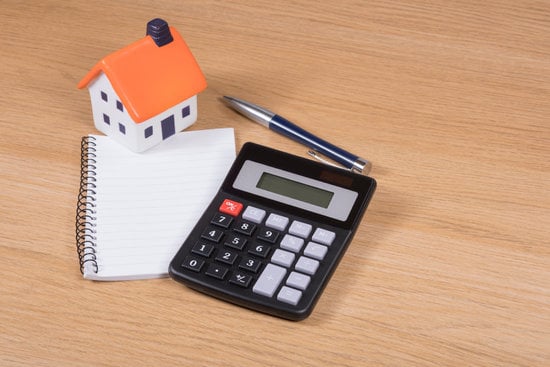Homeowners are always seeking ways to improve and enhance their living spaces. From minor renovations to major remodels, home improvements can add value, functionality, and aesthetic appeal to a property. However, keeping track of these improvements can often be a challenge. That’s why it is essential for every homeowner to have a reliable system in place for tracking home improvements.
Tracking home improvements serves as a crucial record-keeping tool that allows homeowners to keep tabs on the various changes and upgrades made to their homes over time. Whether it’s a new roof installation or a kitchen renovation, having an organized log of these improvements provides numerous benefits.
Firstly, by keeping a detailed log of home improvements, homeowners can easily refer back to past projects and identify any maintenance or repair needs. This makes it easier to proactively address issues before they escalate into larger problems. Additionally, having a comprehensive record of home improvements becomes invaluable when it comes time to sell or rent the property. Tracking specific details about upgrades and enhancements can help attract potential buyers or tenants who are interested in those features.
In order to create an effective home improvement tracking system, there are several steps homeowners can take. From utilizing digital tools and apps to organizing and categorizing the information for easy access, implementing the right strategies ensures that nothing gets overlooked or forgotten. Moreover, tracking costs and evaluating return on investment (ROI) allows homeowners to make informed decisions about future projects.
In this article, we will explore the importance of tracking home improvements in more detail. We will discuss the benefits of creating a detailed log, offer tips on organizing and categorizing the information effectively, provide insights on tracking costs and budgets, and even present expert advice from seasoned homeowners who have mastered the art of effective home improvement tracking.
By taking charge of your home improvement journey through proper tracking, you will ensure that your investments yield maximum benefits both now and in the future.
Why Tracking Home Improvements is Essential for Every Homeowner
Keeping track of home improvements is often overlooked by homeowners, but it is an essential practice that can have significant benefits. From enhancing organization and efficiency to providing valuable documentation and financial insights, tracking home improvements can help homeowners stay on top of their projects, maintain their property value, and make informed decisions for future upgrades. This section will delve into the reasons why tracking home improvements is crucial for every homeowner.
Preserving Investment
One of the main reasons why tracking home improvements is essential is that it allows homeowners to protect their investment. Homes are one of the most significant investments people make in their lifetime, and ensuring they remain in good condition and retain their value over time is crucial.
By keeping a detailed log of all the improvements made to a property, homeowners can provide proof of the work done and potentially increase its market value in case they decide to sell or rent it out in the future.
Efficient Maintenance and Upkeep
Tracking home improvements also facilitates efficient maintenance and upkeep of a property. By maintaining a comprehensive record of all past renovations, repairs, or upgrades, homeowners can easily reference this information when scheduling regular maintenance tasks or planning future projects. This enables them to stay organized and ensure any necessary maintenance work or replacements are done in a timely manner.
Informed Decision Making
Furthermore, tracking home improvements provides homeowners with valuable data that can inform their decision-making processes when considering future upgrades or renovations. By evaluating the success and return on investment (ROI) of previous home improvement projects through tracking data, homeowners can identify which areas provided the most benefit and make more informed choices about where to allocate resources in the future.
The Benefits of Keeping a Detailed Log of Home Improvements
Keeping a detailed log of home improvements offers several benefits for homeowners. Not only does it help in tracking the progress and impact of various improvement projects, but it also provides valuable documentation for future reference and potential resale or rental purposes. Here are some key advantages of maintaining a comprehensive log of home improvements:
Organized Record-Keeping
One of the primary benefits of keeping a detailed log of home improvements is the ability to have an organized record-keeping system. By documenting each improvement project, homeowners can easily track the dates, costs, and details related to their home upgrades. This allows for better organization and retrieval of information when needed.
Maintenance and Repairs
A detailed log helps homeowners keep track of routine maintenance tasks and repairs that they have performed on their property. This can be especially useful in identifying patterns or recurring issues that require attention or further investigation. By knowing when maintenance tasks were last performed, homeowners can ensure that their property remains in good condition and avoid costly repairs caused by neglect.
Future Planning
A comprehensive home improvement log serves as a valuable resource for future planning and decision-making regarding additional upgrades or renovations. By reviewing past projects, homeowners can evaluate which improvements were most successful and identify areas where further enhancements may be required. This allows for informed decisions based on previous experiences and helps prioritize future investments.
By taking advantage of these benefits, homeowners can effectively manage their home improvement journey and make well-informed decisions about their property’s upkeep and future enhancements.
Steps to Create a Comprehensive Home Improvement Tracking System
Creating a comprehensive home improvement tracking system is essential for homeowners who want to keep their projects organized and easily accessible. By following a few simple steps, you can create a system that will help you track your progress and stay on top of your home improvement goals.
- Set up a dedicated notebook or digital folder: Start by designating a specific notebook or creating a digital folder where you can keep all the information related to your home improvements. This could include receipts, contracts, design ideas, measurements, and any other relevant documents. Keep this notebook or folder easily accessible so that you can add to it as new projects arise.
- Document each project: For every home improvement project you undertake, it’s important to document the details. Create a separate entry in your tracking system for each project, including the start date, end date, budget, materials used, and any additional notes or observations. This will help you keep track of your progress and evaluate the success of each project.
- Use lists and categories: Organize your home improvement tracking system using lists and categories. Create a list of different areas or rooms in your house (e.g., kitchen, bathroom, living room) and categorize each project accordingly. Within each category, create subcategories for specific projects (e.g., kitchen renovation – countertops). This will make it easier to find information quickly when you need it.
- Track costs and budgets: In addition to documenting the progress of each project, it’s important to track the costs involved. Keep a record of all expenses related to each project within your tracking system. This will give you an accurate overview of how much money you are spending on your home improvements and help you stay within budget.
- Regularly update and review: Your home improvement tracking system should be regularly updated as new projects are completed or new ideas arise. Take some time every month or quarter to review the progress of your projects and make any necessary updates to your system. This will ensure that you have an up-to-date record of all your home improvements.
By following these steps, you can create a comprehensive home improvement tracking system that will help you stay organized and on top of your projects. Whether you prefer using a physical notebook or a digital folder, having a dedicated space to document and track your progress will make the home improvement journey much smoother.
Utilizing Digital Tools and Apps for Efficient Home Improvement Tracking
In today’s digital age, technology has made it easier than ever to track and manage various aspects of our lives, including home improvements. Utilizing digital tools and apps can greatly enhance the efficiency and effectiveness of tracking home improvements. With the wide range of options available, homeowners have the opportunity to choose the best tool or app that suits their specific needs and preferences.
One popular option for efficient home improvement tracking is using mobile apps designed specifically for this purpose. These apps often come with features such as project management tools, budget trackers, and photo organization capabilities. They allow homeowners to easily input information about their projects, track progress, set reminders for upcoming tasks or deadlines, and even store receipts and invoices digitally.
Another option is using online platforms or software that offer comprehensive home improvement tracking capabilities. These platforms generally provide a centralized hub where homeowners can log all their projects, track expenses and budgets, store important documents like warranties or permits, and even collaborate with contractors or designers. These tools often offer customizable categories and tags to help organize projects based on room, type of improvement, or priority level.
Additionally, utilizing digital tools allows for seamless communication and collaboration with other household members involved in the home improvement process. Many apps and platforms enable users to share project details, update progress in real-time, assign tasks to different individuals within the household, and leave comments or notes for better coordination.
Organizing and Categorizing Home Improvements for Easy Access and Reference
One important aspect of tracking home improvements is organizing and categorizing them in a way that allows for easy access and reference. By properly organizing your home improvement projects, you can efficiently track their progress, locate relevant information, and plan future improvements. Here are some tips on how to organize and categorize your home improvements for easy access and reference:
- Create a filing system: Start by setting up a physical or digital filing system to store all documentation related to your home improvements. This can include contracts, receipts, product manuals, warranties, design plans, permits, and any other relevant paperwork. Keep these documents organized in clearly labeled folders or files so that you can easily locate them when needed.
- Use categories and labels: Divide your home improvement projects into categories such as kitchen renovations, bathroom remodels, landscaping upgrades, electrical work, plumbing repairs, etc. Assign each project a specific label or identifier that you can use consistently throughout your tracking system. This will make it easier to search for and retrieve information on specific projects.
- Maintain a detailed log: In addition to storing physical paperwork or digital files, keep a detailed log of each home improvement project. Include information such as the project name or description, the date it was started and completed, the contractor or service provider involved (if applicable), the total cost of the project, any warranties or guarantees associated with it, and any other relevant details.
Using these methods of organization can greatly improve your ability to track and manage multiple home improvement projects. It will also serve as a valuable resource when it comes time to review past improvements or plan for future ones.
| Category | Label |
|---|---|
| Kitchen Renovations | KIT-001 |
| Bathroom Remodels | BAT-005 |
| Landscaping Upgrades | LND-012 |
| Electrical Work | ELE-003 |
| Plumbing Repairs | PLM-008 |
Tracking Home Improvement Costs and Budgets
One of the most important aspects of tracking home improvements is keeping a close eye on the costs and budgets associated with these projects. Without proper monitoring, it can be easy to overspend or lose track of expenses, which can quickly derail your home improvement plans. To ensure you stay on budget and make informed decisions, here are some tips and strategies for tracking home improvement costs:
- Create a budget: Before starting any home improvement project, it’s essential to establish a clear budget. Determine how much you’re willing to spend overall and break it down into specific categories or tasks within the project. This will help you allocate funds appropriately and prevent overspending.
- Track expenses in real-time: It’s crucial to keep track of all expenses related to your home improvement projects as they occur. Whether it’s purchasing materials, hiring contractors, or renting equipment, maintain detailed records of each expense so that you have an accurate understanding of where your money is going.
- Utilize digital tools: There are several digital tools available today that can simplify the process of tracking home improvement costs. Consider using expense tracking apps or software specifically designed for this purpose. These tools often provide features such as receipt scanning, expense categorization, and even budget alerts to help you stay on track.
- Regularly review and analyze spending: Set aside time at regular intervals to review your home improvement spending. Look for patterns or areas where you may be overspending in comparison to your initial budget. Adjustments may be necessary to keep within your financial limits.
- Be mindful of unexpected expenses: Home improvement projects often come with unexpected surprises or hidden costs that can quickly add up. To account for these unforeseen expenses, include a contingency fund in your budget from the start. This way, you’ll have extra funds available if needed without compromising other aspects of your project.
By following these tips and strategies, you can better manage your home improvement costs and budgets. Tracking your expenses in a systematic manner will give you a clear picture of where your money is going and enable you to make informed decisions throughout the project. Remember, staying on budget will help ensure the success and satisfaction of your home improvements in the long run.
Evaluating the Success and ROI of Home Improvements through Tracking Data
Tracking data is not only useful for keeping a record of home improvements, but it can also provide valuable insights into their success and return on investment (ROI). By evaluating the impact and cost-effectiveness of different projects, homeowners can make more informed decisions about where to prioritize their resources. Here are some key considerations when using tracking data to evaluate the success and ROI of home improvements.
Setting Benchmarks
One important step in evaluating the success of home improvements is to set benchmarks against which you can compare your results. This could include metrics such as energy savings, increased property value, or enhanced functionality. By establishing these benchmarks before starting a project, you can better assess whether the improvements have met or exceeded expectations.
Collecting Relevant Data
To accurately evaluate the success and ROI of home improvements, it’s essential to collect relevant data throughout the process. This may include recording energy consumption before and after installing energy-efficient appliances or systems, documenting market values before and after renovations, or tracking any changes in functionality or usability. The more comprehensive your data collection efforts are, the better you will be able to assess the true impact of your improvements.
Analyzing Cost-effectiveness
Another critical aspect of evaluating home improvement projects is analyzing their cost-effectiveness. This involves assessing not only the initial investment but also ongoing maintenance costs and potential savings over time. For example, if you’ve made upgrades that reduce monthly utility bills, calculating how long it will take for those savings to offset the initial expense can help determine the overall cost-effectiveness of the project.
Considering External Factors
When evaluating the success and ROI of home improvements, it’s crucial to consider external factors that may influence your results. These could include changes in market conditions, fluctuations in property value trends, or shifts in consumer preferences. By taking these external factors into account, you can better understand the context in which your home improvements have taken place and make more informed judgments about their success.
By utilizing tracking data to evaluate the success and ROI of home improvements, homeowners can make more informed decisions about future projects. With benchmarks, relevant data collection, cost-effectiveness analysis, and a consideration of external factors, homeowners can gain valuable insights into their investments. This information not only helps them determine whether their upgrades have been successful but also provides guidance for future planning and decision-making in their ongoing home improvement journey.
How to Document and Display Home Improvements for Future Sale or Rent
When it comes time to sell or rent your home, having a documented record of the improvements you made can greatly benefit you. Prospective buyers and tenants often want to know the history of the property and what upgrades have been done. In this section, we will explore the importance of documenting and displaying home improvements for future sale or rent, as well as provide helpful tips on how to effectively showcase these updates.
One of the main reasons you should document and display home improvements is that it adds value to your property. A well-maintained home with visible upgrades is more appealing to potential buyers or renters. By having a detailed log, including before-and-after photos and receipts, you can demonstrate the care and attention you have put into your home. This can help justify a higher asking price or rent rate.
To effectively document and display your home improvements, consider creating a portfolio. This can be either physical or digital and should showcase each improvement individually. Include photographs that clearly demonstrate the changes made, as well as any relevant documentation such as permits or warranties. It’s also important to make note of when each improvement was completed, along with any associated costs.
| Home Improvement | Date Completed | Cost | Before Photo | After Photo |
|---|---|---|---|---|
| Kitchen Remodel | June 2018 | $20,000 |  |  |
| Bathroom Renovation | October 2019 | $10,000 |  |  |
By having a well-documented record of your home improvements, not only are you able to attract more interested buyers or tenants, but you also provide them with valuable information about the updates that have been made. This transparency and attention to detail can help build trust and confidence in potential renters or buyers, potentially leading to a faster sale or rental agreement.
Expert Insights
Section:
Tracking home improvements can be a daunting task, especially for new homeowners or those who are not familiar with the process. However, there are plenty of tips and insights that can help make tracking home improvements more efficient and effective. In this section, we will gather expert advice from seasoned homeowners who have successfully tracked their home improvement projects over the years.
One important tip shared by experienced homeowners is to start tracking home improvements as soon as you move in. This means creating a comprehensive list of all the existing features and conditions of your home before making any changes. Not only does this provide a baseline for future comparisons, but it also helps you keep track of any repairs or replacements needed.
Another valuable insight from seasoned homeowners is the importance of categorizing your home improvements. By organizing your projects into categories such as structural changes, cosmetic updates, or energy-efficient upgrades, you can easily locate specific information when needed. This becomes especially useful when it comes to maintenance or when considering future renovations.
Additionally, many experts recommend utilizing digital tools and apps to aid in home improvement tracking. These tools can range from simple spreadsheets to dedicated apps that allow you to input details such as project costs, timelines, contractor information, and photos. Using these digital resources not only streamlines the tracking process but also ensures all relevant data is readily accessible whenever required.
| Expert Tip |
|---|
| Start tracking home improvements as soon as you move in by creating a comprehensive list. |
| Categorize your home improvements for easy access and reference. |
| Utilize digital tools and apps to streamline the tracking process and have all relevant data easily accessible. |
Conclusion
In conclusion, tracking home improvements is a crucial aspect of being a responsible homeowner. By keeping a detailed log of all the changes and upgrades made to your home, you not only ensure that you are fully aware of the state and value of your property, but you also create a valuable resource for future reference and decision-making.
The benefits of keeping a comprehensive tracking system for home improvements are numerous. Not only does it allow you to easily access information about your home’s history and maintenance, but it also enables you to evaluate the success and return on investment (ROI) of each project. This data can be invaluable when deciding which improvements are worth pursuing in the future.
To create an effective tracking system, consider utilizing digital tools and apps specifically designed for home improvement tracking. These resources can help streamline the process by allowing you to easily input information, upload photos, and categorize projects. With these tools at your disposal, organizing and categorizing your home improvements becomes much more efficient.
In addition to tracking the costs and budgets associated with various projects, it is also essential to document and display your home improvements for future sale or rent. Potential buyers or tenants will appreciate having access to this information as it provides them with a comprehensive understanding of the property’s history and condition.
Taking charge of your home improvement journey through tracking is not just about being organized; it is about making informed decisions that will enhance the value, functionality, and appeal of your home. By following expert insights from seasoned homeowners who have successfully tracked their own progress, you can gain valuable tips and strategies that will further optimize your tracking efforts.
By implementing an effective system for tracking home improvements, homeowners can effectively manage their properties while maximizing their investments. So take charge today by starting your own comprehensive home improvement tracking journey – it will undoubtedly pay off in the long run.
Frequently Asked Questions
How do I keep track of my home renovations?
Keeping track of home renovations is essential to stay organized and ensure that all tasks and expenses are accounted for. One effective way to do this is by creating a project management spreadsheet or document where you can record all the details related to your home renovations.
This could include information such as the start and end dates of each project, a breakdown of materials purchased, costs incurred, contractor contact information, and any important notes or observations made during the process. Additionally, it can be helpful to take photos before, during, and after each renovation step to visually document the progress and changes made.
Should you keep track of home improvements?
Yes, it is highly recommended to keep track of home improvements for several reasons. Firstly, maintaining a record of your home improvements allows you to accurately assess the value-added or potential return on investment (ROI) when it comes time to sell your property. By having a comprehensive log of the improvements made along with associated costs, you can confidently determine if the upgrades have contributed positively towards increasing your home’s value.
Secondly, keeping track of home improvements provides helpful documentation for insurance purposes in case of damage or loss. Lastly, having a detailed record enables you to plan future projects more effectively by evaluating past experiences and ensuring you do not repeat any mistakes or oversights.
What information should you record in a log for keeping track of home improvement projects?
When maintaining a log for tracking home improvement projects, certain information should be recorded for accurate record-keeping. Begin by noting down the name or description of each specific project undertaken. Include details about any contractors involved in carrying out the work along with their contact information. Capture the date when each project started and note whether there were specific milestones achieved along the way.
Record all expenses incurred throughout the renovation process – this includes both material costs as well as labor expenses if applicable. Finally, write down any notable details regarding challenges faced during the project or lessons learned that could be useful for future projects. Comprehensive documentation will enable you to refer back easily while staying organized and informed about every aspect of your home improvement endeavors.

I’m thrilled to have you here as a part of the Remodeling Top community. This is where my journey as an architect and remodeling enthusiast intersects with your passion for transforming houses into dream homes.





